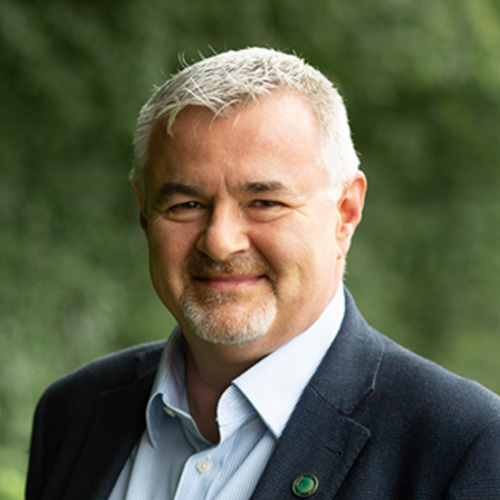Experts from Carbon3IT, Quantum and Iron Mountain share their insights into how data centres’ net zero plans can and should be adapted to account for regulatory changes, updating operations and decarbonisation, while Schneider Electric assesses the data centre landscape with new research surrounding the energy crisis and meeting emissions reduction plans.
81% of business leaders at UK and Irish data centres say the energy crisis will impact their organisation’s ability to meet its emissions reduction plans, according to research published by Schneider Electric, a leader in the Digital Transformation of energy management and automation.
Of that figure, around half of organisations say they are delaying planned investment in sustainability and net zero plans (49%). Four-in-10 of the same organisations (40%) say they now have more immediate business challenges to meet, while 43% claim that emission reduction targets are no longer an issue for their stakeholders. More than one-in-five (22%) of these firms claim that taking practical action to meet targets is difficult.
Decarbonisation helps businesses reduce energy use and lower energy costs at a time when energy prices remain volatile.
Crucially, the survey of more than 1,500 large organisations reveals that business leaders still recognise the importance of working towards emissions reduction targets, as nearly one-third (32%) of data centre business leaders believe that climate change and net zero ambitions will become more of a priority over the next three years. Only a small minority (11%) believe that national net zero commitments will be diluted in that time.
“Business leaders tell us that the energy crisis should be seen alongside the many other challenges they have faced over the last 12 months, including economic pressures, cybersecurity and skills shortages,” said Mark Yeeles, Vice President, Secure Power Division, Schneider Electric UK and Ireland. “Yet our research suggests that some of the UK and Ireland’s data centres are ‘kicking the carbon emissions can down the road’, as a result of the energy crisis.
“As fears grow about progress against global commitments made under the Paris Agreement, and the UK’s Climate Change Committee warns of a lack of progress on emissions cuts, the UK and Ireland need data centres to play their part and stick to their net zero and emissions reduction targets,” added Yeeles.
The survey also reveals that 32% of data centre managers believe that energy prices will fall over the next three years, while 71% think their organisation will still be addressing the energy crisis in 12 months.
Presenting the survey findings, Yeeles urged data centres to re-engage with their emissions reduction ambitions: “It’s not all doom and gloom: as our research shows, business leaders still believe in their climate change ambitions – they simply need to push the subject back up the corporate agenda.
“The technology required to help businesses decarbonise is already available – and the return on investment for these solutions has never been more attractive, with payback periods measured in months rather than years. Organisations still have time to meet their net zero commitments by understanding and addressing energy use, investing in renewable energy and energy-saving technology, and embedding sustainability and carbon reduction targets in their business plans,” he added.
John Booth, Consultant, Carbon3IT

From my research, it appears that most data centre operators’ net zero plans consist of moving to 100% renewable energy use via PPAs or in some cases investing in renewable energy projects around the globe. These are now coming under scrutiny as their actual sites are still using energy from the local grid which could be high in fossil fuels. Other initiatives include using HVO (Hydrotreated Vegetable Oil) instead of diesel in backup generation and the use of evaporative cooling solutions. So, my conclusion is that the recent energy crisis does not appear to have made any significant impact on their net zero plans, yet.
However, the impact of the energy crisis has focused the minds of policymakers and legislators globally and the current and impending legislation will have more of an impact – and make no mistake, the legislation will have a huge impact.
For starters, if you are seeking to use a green financial instrument to finance your data construction project anywhere in the world, and have European investors, then the Taxonomy Climate Delegated Act (TCDA) will apply. This requires the operator to implement 106 of the EU Code of Conduct for Data Centre (Energy Efficiency) best practices as well as undertake various other activities. The EU Energy Efficiency Directive (EED) has a specific section for data centres and in a nutshell, operators will be required by May 24, 2024, to report to the European Commission the total energy consumption for the site, the percentage derived from renewable energy sources, water usage and the amount of waste heat reused.
The Corporate Sustainability Reporting Directive (CSRD) applies to data centres and their customers – operators will be required to report various data centre metrics and calculate their GHG emissions. In addition, customers of colocation and cloud operators will need to be provided with energy data that applies to their estate, be it colocation or from cloud services. Some supplementary regulations are associated with the CSRD, these are the Corporate Sustainability Due Diligence Directive (CSDDD) and the European Sustainability Reporting Standards (ESRS).
The final element is the Digital Operations Resilience Act (DORA). DORA creates a regulatory framework on digital operational resilience whereby all firms need to make sure they can withstand, respond to and recover from all types of ICT-related disruptions and threats. Energy can be considered a threat to digital operations.
In conclusion, the regulatory landscape for data centres – and specifically concerning energy – is hotting up. The new legislative frameworks take into account the energy crisis which will make data centre operators adapt their net zero plans.
Ines Wolf, Pre-Sales Manager for Central Europe, Quantum

With continuously increasing data volumes and simultaneously rising costs for electricity, companies are faced with an enormous problem: how can data centres achieve their net zero goals during an energy crisis? Historically, green and cheap have often been mutually exclusive. In the search for a solution to the problem, one inevitably comes across the biggest energy consumer in the data centre: high-capacity storage, which traditionally relies on energy-hungry HDDs.
To reduce the energy consumption of data storage, and consequently the CO2 consumption, there are in principle several levers that companies can use. Considering that 90% of all generated data is rarely used again, there is a huge potential for savings. Tape storage plays a key role in achieving those savings. Compared to disk systems, tape consumes much less electricity and generates only a fraction of the heat. It consumes virtually no energy when not in use. On top, those energy savings increase exponentially with the amount of data stored. For example: at 0.5 PB of data stored, one can save 50% of electricity with tape. At 50 PB, savings of over 95% are possible as efficiency of scale applies.
However, moving all data to tape to save kWh and CO2 is not feasible. Data centres must always guarantee the highest performance and availability of the data they hold – something that can hardly be achieved with tape only. Looking at a good balance between high and low-performance data storage, a two-layered approach would fit: a super-fast NVMe-flash-tier for high-performance workloads and a much cheaper tape tier for less frequently used data. Both use much less energy than HDDs, but the question is not only about the right balance of these two layers, it’s about how to meet an organisation’s dedicated requirements and how different storage layers can be efficiently managed on a software layer.
HDD storage still has its justification. Organisations must manage huge amounts of data only by one single integrated data platform instead of a patchwork of various solutions, and because it is practically impossible to manage huge amounts of data manually, this data platform needs to be AI-driven. AI allows the optimisation of resources as fewer human man-hours are needed to complete repetitive tasks. AI systems can automate complex tasks that would be time-consuming or even impossible for humans.
When discussing the costs of a hybrid storage solution concept, it is important to also consider the sustainability of the individual storage components. The typical life cycle of a disk storage system is about five years, while a tape storage system is usually used for more than 10 years. With this duration of use, not only the sustainability in terms of operation comes into play, but also the sustainability in terms of the manufacture of the storage systems.
Net zero in the data centre is possible. With the right strategy and solutions, organisations can save huge amounts of energy and CO2 by optimising the data centre’s biggest energy consumer: storage. The savings can be used to offset the higher cost of flash storage and the more expensive green power. This approach is also future-proof as the savings scale exponentially, which will help manage the ever-increasing amount of data created and stored. Compared to traditional HDD storage, organisations can save up to 95% energy for data storage if they move as much data as possible to tape.
Chris Pennington, Director of Energy and Sustainability, Iron Mountain

Recent world events have demonstrated how fragile our energy markets can be, especially with conflicts that spark increases in global energy prices. Looking beyond the potential for global events to impact near-term pricing, we’re all gaining a better appreciation that the energy crisis and climate crisis are fundamentally related. We cannot address them successfully as separate issues, and the carbon footprint of things we buy, including energy, is now an indicator of embodied risk. Risk of supply interruptions, increasing regulation and unsustainable (as in no longer practical) future business practices.
Data centres are naturally focused on mitigating risk, therefore it is not surprising that the largest supporters of carbon-free energy are from within the data centre industry. Electricity consumption is our most readily addressable area for positive environmental impact and a necessary first element in any net zero plan. Today the purchase of clean power has become the norm, rather than a differentiator. Or has it?
The question is, whose power is the data centre operator making green? There is inconsistency within the industry on whether the colocation customer reports the energy consumed by their servers as their own Scope 2 responsibility, or the data centre operator that purchases the energy for the site reports it as their own. One thing most basic to climate science supporting the fight against climate change is that we need good data and no double counting. Ideally, the data centre industry would adopt an aligned approach to ‘whose energy is it’ to accurately report our individual and collective efforts towards net zero goals.
Why does it matter who claims the energy if the operator is making it all clean anyway? The risk is that the operator is not. Operators might set initial targets focused on their own Scope 1 and Scope 2 operational (non-IT load) emissions, leaving the massive amount of IT MWHs outside of their carbon reduction goals. The data centre then has a shorter path towards net zero operations while avoiding the far greater impact of decarbonising most of the energy the site purchases. Colocation data centres are the energy supply chain for their customers. This creates a unique and impactful opportunity for data centre providers to help customers achieve their goals by decarbonising the energy they consume.
Decarbonising our consumption each hour of every day will have a massive impact on combatting future climate change. As large energy buyers, we can make a material difference in support of a sustainable digital future. Despite the challenges, every data centre provider’s net zero plan begins with energy and should leverage the unique opportunity to help customers achieve their own decarbonisation goals by including all electricity the site consumes.
Click below to share this article


